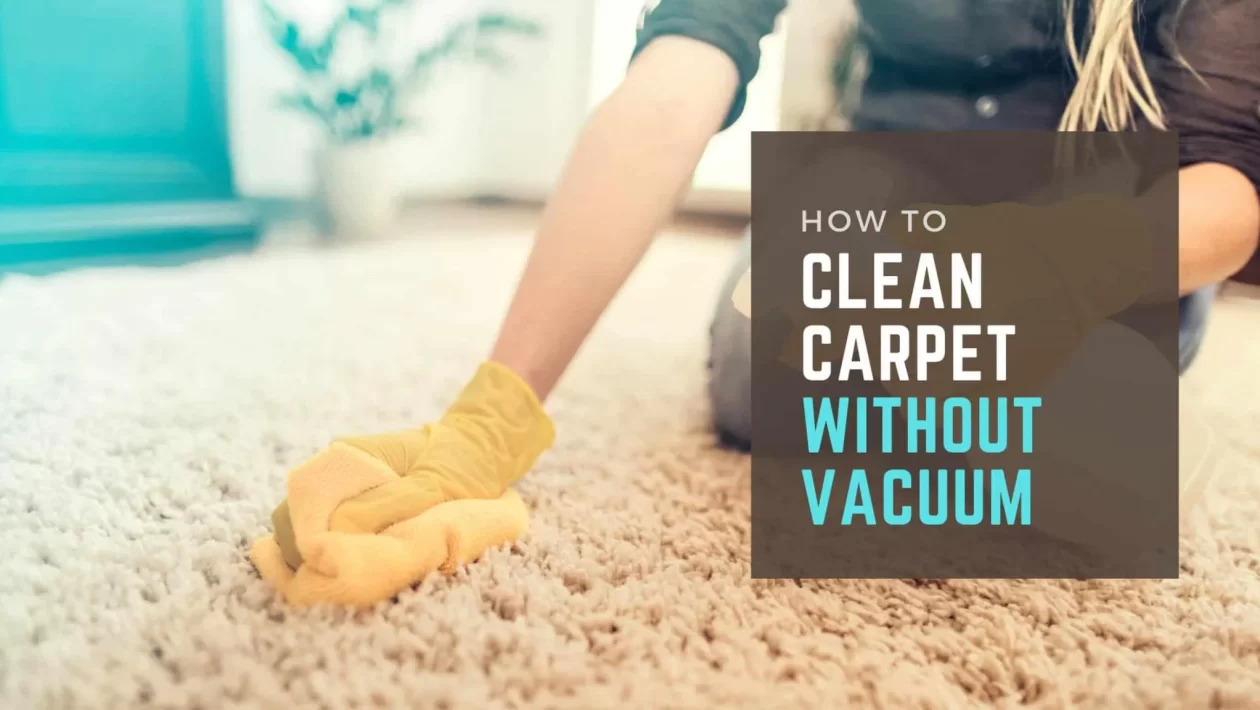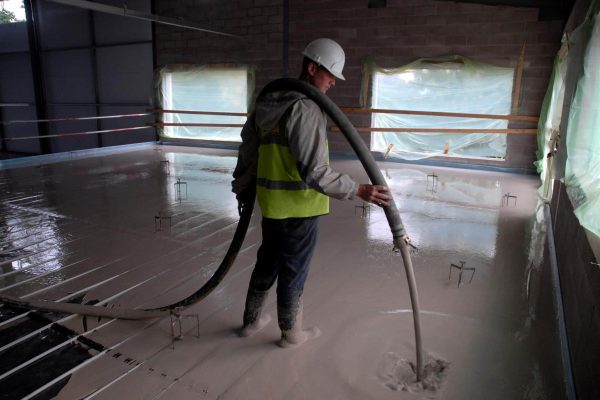Carpets are part of the home. It provides warmth, comfort, and aesthetic appeal. However, they are also prone to accumulating dirt, dust, and debris over time, making them look dull and unclean. While vacuum cleaners are the most common and efficient tool for carpet cleaning, not everyone may have access to one. But fear not! There are several effective ways to clean carpets without a vacuum cleaner. Let us explore some of these methods in detail.
Method 1: Using a Broom or a Brush
One of the simplest ways to clean carpets without a vacuum cleaner is by using a broom or a brush. While it may require some physical effort, it can effectively remove surface dirt and debris from your carpets.
Step 1: Prepare the Area
Start by removing large objects, such as furniture or toys, from the carpeted area you want to clean. This will allow you to access the entire carpet and clean it thoroughly.
Step 2: Sweep the Carpet
Using a broom or a brush with stiff bristles, sweep the carpet straight from one end to the other. Be sure to clean in one direction to avoid pushing the dirt back into the carpet fibers. Repeat this process multiple times, overlapping the previous sweep lines to ensure thorough cleaning. Pay extra attention to high-traffic areas, where dirt tends to accumulate more.
Step 3: Shake Out the Broom or Brush
After each sweep, shake the broom or brush outside to remove the accumulated dirt and debris. A stiff brush cleans the bristles of the broom or brush, making it more effective in picking up dirt from the carpet.
Step 4: Spot Clean Stains
If you come across any stains while sweeping, use a carpet cleaner or a homemade solution to spot-clean them. You can make a simple carpet cleaner by creating a solution. Spray the solution onto the stain and let it sit for a few minutes. Blot it with a clean cloth or towel.
Step 5: Vacuum Up the Dirt
Once you have swept the entire carpet, use a dustpan and brush to collect the swept dirt and debris. Alternatively, you can use a clean, damp cloth or towel to gently pick up the dirt by patting it onto the carpet.
Method 2: Using a Carpet Sweeper
A carpet sweeper is a manual cleaning tool specifically designed for carpets. It has rotating brushes that help pick up dirt from carpet fibers, making it an effective alternative to a vacuum cleaner.
Step 1: Prepare the Area
As with the broom or brush method, remove any large objects from the carpeted area you want to clean.
Step 2: Adjust the Carpet Sweeper
Most carpet sweepers have adjustable brush settings, allowing you to set the height according to the thickness of your carpet. Adjust the brush settings accordingly to ensure effective cleaning.
Step 3: Sweep the Carpet
Hold the handle of the carpet sweeper and push it forward in a straight line, then pull it back towards you, keeping the brushes in contact with the carpet fibers. Repeat this process in overlapping lines until you have covered the entire carpeted area.
Step 4: Empty the Dirt Container
Carpet sweepers usually have a dirt container or a bag that collects the dirt and debris. Check the dirt container or bag frequently and empty it as needed to ensure optimal cleaning performance.
Step 5: Spot Clean Stains
If you encounter any stains while using the carpet sweeper, use a carpet cleaner or a homemade solution to spot-clean them. You can use a commercial carpet cleaner or create your own. Spray the solution and blot it out.
Step 6: Refresh with Baking Soda
After using the carpet sweeper, you can refresh your carpets by sprinkling some baking soda. Baking soda is known for its deodorizing properties and can help absorb odors from carpets. Sprinkle baking soda evenly over the carpeted area and let it sit for 15-30 minutes. Then, use a broom or a brush to agitate the baking soda into the carpet fibers, and finally, vacuum it up using a dustpan and brush or a handheld vacuum cleaner.
Method 3: Using a Carpet Rake
A carpet rake is a specialized cleaning tool with long, stiff bristles that can help remove dirt, debris, and pet hair from carpets. It can be a valuable alternative to a vacuum cleaner, especially for low-pile carpets.
Step 1: Prepare the Area
Start by removing any large objects from the carpeted area and give it a thorough sweep or brush to remove any loose dirt and debris.
Step 2: Adjust the Carpet Rake
Most carpet rakes have adjustable bristle settings, allowing you to set the height according to the thickness of your carpet. Adjust the bristles accordingly to ensure effective cleaning.
Step 3: Rake the Carpet
Hold the handle of the carpet rake and rake it over the carpet in long, sweeping motions, similar to how you would rake leaves in your yard. Make sure to rake in one direction to avoid pushing dirt back into the carpet fibers. Repeat this process in overlapping lines until you have covered the entire carpeted area.
Step 4: Empty the Dirt Container
Some carpet rakes may come with a dirt container or a bag that collects the dirt and debris. To maintain optimal cleaning performance, check the dirt container or bag frequently and empty it.
Step 5: Spot Clean Stains
If you encounter any stains while raking, use a carpet cleaner or a homemade solution to spot-clean them, as mentioned in the previous methods.
Step 6: Refresh with Vinegar Solution
After raking, you can refresh your carpets using a vinegar solution. Mix water and white vinegar and lightly mist the solution over the carpeted area. Vinegar can help remove odors and disinfect carpets. Let the vinegar solution sit for a few minutes, and then use a clean cloth or towel to blot the carpets and remove any excess moisture.
Method 4: Using a Rubber Broom or Squeegee
A rubber broom or squeegee can be a handy tool for cleaning carpets, as the rubber bristles or blade can help pick up dirt and debris from the carpet fibers.
Step 1: Prepare the Area
Remove any large objects from the carpeted area and give it a thorough sweep or brush to remove loose dirt and debris.
Step 2: Adjust the Rubber Broom or Squeegee
If using a rubber broom, adjust the bristles to the appropriate height for your carpet. If you use a squeegee, ensure the blade is clean and in good condition to prevent scratching the carpet.
Step 3: Sweep or Squeegee the Carpet
Using long, sweeping motions, sweep the carpet with the rubber broom or squeegee, applying gentle pressure to allow the rubber bristles or blade to pick up the dirt and debris from the carpet fibers. Start from one side of the room and work towards the other, overlapping your strokes for thorough cleaning.
Step 4: Collect Dirt and Debris
As you sweep or squeegee, you will notice dirt and debris collecting on the rubber bristles or blade. Use a clean cloth or a dustpan and brush to collect the dirt and debris, and dispose of it in a trash bag or a compost bin.
Step 5: Spot Clean Stains
If you come across any stains while using the rubber broom or squeegee, use a carpet cleaner or a homemade solution to spot-clean them, similar to the previous methods.
Step 6: Refresh with a Fabric Refresher
After cleaning with the rubber broom or squeegee, you can refresh your carpets using a fabric refresher spray. Simply spray the fabric refresher evenly over the carpeted area, following the instructions on the product label, and allow it to dry.
Method 5: Using a Carpet Brush or Carpet Beater
A carpet brush or carpet beater can effectively clean carpets without a vacuum cleaner, especially for low-pile carpets or rugs.
Step 1: Prepare the Area
Remove any large objects from the carpeted area and give it a thorough sweep or brush to remove loose dirt and debris.
Step 2: Choose a Carpet Brush or Carpet Beater
Select a carpet brush or beater appropriate for your carpet type and size. A carpet brush typically has stiff bristles that can help loosen dirt and debris from the carpet fibers, while a carpet beater is a handheld tool with a flexible head that can be used to beat the carpet, similar to how you would beat a rug.
Step 3: Brush or Beat the Carpet
If you are using a carpet brush, hold the handle and brush the carpet in long, sweeping motions, applying gentle pressure to allow the bristles to penetrate the carpet fibers and loosen dirt and debris. If you use a carpet beater, hold the handle and beat the carpet with the flexible head, using quick, rhythmic motions to dislodge dirt and debris.
Step 4: Collect Dirt and Debris
You will notice dirt and debris coming to the surface as you brush or beat the carpet. Use a clean cloth or a dustpan and brush to collect the dirt and debris, and dispose of it in a trash bag or a compost bin.
Step 5: Spot Clean Stains
If you encounter any stains while using the carpet brush or carpet beater, use a carpet cleaner or a homemade solution to spot-clean them, similar to the previous methods.
Step 6: Refresh with a Carpet Powder
After using the carpet brush or carpet beater, you can refresh your carpets using carpet powder. Carpet powder is a dry, powdery substance that can be sprinkled over the carpeted area and then vacuumed up, helping to absorb odors and freshen the carpets. Follow the instructions on the product label for the best results.
In conclusion, while a vacuum cleaner is a convenient and effective tool for cleaning carpets, alternative methods can be used to clean carpets without a vacuum cleaner. Whether you choose to use a carpet sweeper, a carpet rake, a rubber broom or squeegee, or a carpet brush or carpet beater, the key is to thoroughly remove dirt and debris from the carpet fibers, spot clean stains, and refresh the carpets using appropriate cleaning solutions. Following these steps and taking care of your carpets regularly, you can maintain a clean and fresh-looking carpeted area even without a vacuum cleaner.
It’s important to note that while these alternative methods can be effective for regular maintenance and light cleaning, they may not be as thorough as using a vacuum cleaner, especially for deep cleaning or removing embedded dirt and allergens. If you have allergies or asthma, or if your carpets are heavily soiled, it’s recommended to seek professional carpet cleaning services for a more thorough cleaning.










